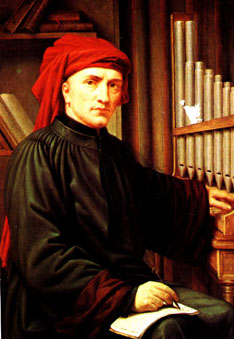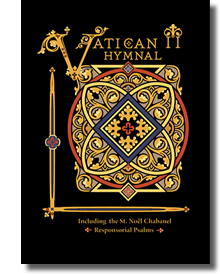But they have to write their stories anyway. I’ve been fielding lots of calls from these nice people and had to explain to them that the more substantive textual changes actually come not from the pews but from the sanctuary. The celebrant is the one who is fielding most of the robust changes, and they affect the entire Mass, from the collects to the canon to the post-communion prayers.
The language is completely different. What previously was choppy and plain is now extended and elegant. Options for prayers that aren’t even in the Latin edition have been eliminated. The incessant talk about “peace and love” that reflected the political-cultural concerns of 1970 are gone and replaced by actual English equivalents of the Latin. The language is generally higher and more prayerful. The text sounds like liturgy, sounds like Church, sounds like prayer, and the attempt to render all of this in dress-down-Friday prose is completely gone.
The overall effect is about more than the text, as important as that is. The really substantive change concerns the overall ethos of the Mass that will come through in the new language. It is serious, solemn, dignified, and even a bit remote in the way that mysterious and awesome things really should be. The sentence formulations are not like vernacular. They are elevated but without being affected.
The biggest evidence of this change concerns the music. There is a long history in the Catholic Church of missteps in this regard. The people who produce the Missals don’t think much about the music question. This problem vexed the years following the Council of Trent, and it was no less true in the reforms that followed the Second Vatican Council. There is a tendency to focus on the words alone while forgetting that the Roman Rite really is a sung ritual and has been since the beginning.
The people involved in the production of the English version of the Third Edition of the Roman Missal got it right. They embedded the music as part of the text. You can hardly turn a page in this Missal without bumping into musical notation. This is just fantastic because it establishes a norm for both tunes and for the preferred style of the music to be used at Mass. This style is call chant. The prayers are all chant. The people’s parts are chanted. There is a provision for all the parts of the Mass to be sung from beginning to end. We won’t have to wait 50 years or 300 years for the music question to be settled. It is already settled with the printing of the Missal itself.
This is just great because it solves a serious and major problem that currently exists within the Catholic Church: the music that is commonly employed in the liturgy works at cross purposes with the ritual itself. The establishment of a new (actually old) musical norm will have a gradual effect on the choices that the musicians make in the future. Pop music will not fit in well with a chanted Mass. There will be a gravitational pull toward making the entire Mass a chanted event, thereby fulfilling one of the goals of the Second Vatican Council to grant chant “first place” at Mass.
Now, in talking about these issues with reporters, I’ve noticed something that Catholics rarely talk about. The existing problems in the musical area are well known by these reporters. They’ve variously attended Mass with the expectation of hearing chant but come away with a sense of alarm or even shock that this is not what they heard. They tell me nightmare stories I’ve heard a thousand times, stories of amateur guitar quintets that strum away from the altar, stories of bongos and electric basses and trap sets, stories that make your hair stand on end and make you want to hide from embarrassment.
In some way, all these reporters, Catholic or not, are rooting for a dramatic change. They want the Catholic Church to be true to itself. They are aware of what a mighty contribution that Catholicism has made to our culture and they worry that this contribution is not fully appreciated by the Catholic Church herself. They want it to come back, under the conviction that the world really needs Gregorian chant to be a beautiful place. And they want it to exist in every single Catholic parish.
For this reason, I’ve found a very friendly group among the reporters. They want to hear what I have to say and they are obviously sympathetic to what I’m saying. They freely laugh about the pathetic attempts to spruce up our formal prayers with finger snapping and groovy bass rhythms. As the interview goes on, these reporters become even more open about their disdain for this transparent attempt to popularize what is actually a robust and serious experience. No, they don’t believe in the faith but it makes sense to just about anyone that people who do believe in the faith ought to be serious about it.
To be sure, not everyone that these reporters call are willing to discuss the profound implications of these changes in the Missal. The USCCB is generally downplaying the extent of the changes so as not to alarm the faithful. The big publishers are only talking about their products and the marketing opportunities that the change represents – which strikes me as rather cynical. I don’t begrudge anyone a chance to make a buck, but there is still something unseemly about regarding the liturgy as a cash cow. What’s more, the best music for the Mass at this point is entirely free and available for instant download, offering a chance for total liberation from the cash nexus.
And so obviously we are talking about more than meets the eye here. This is a serious change, a big improvement, and wonderful opportunity for the Catholic faith to express itself with a new voice in changed times.





